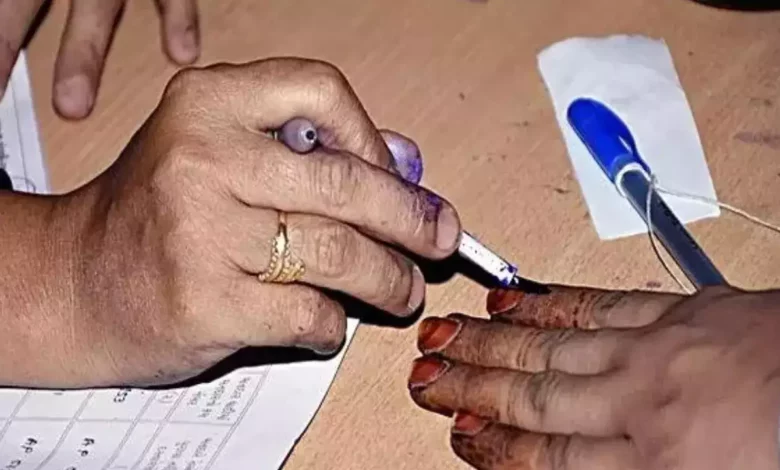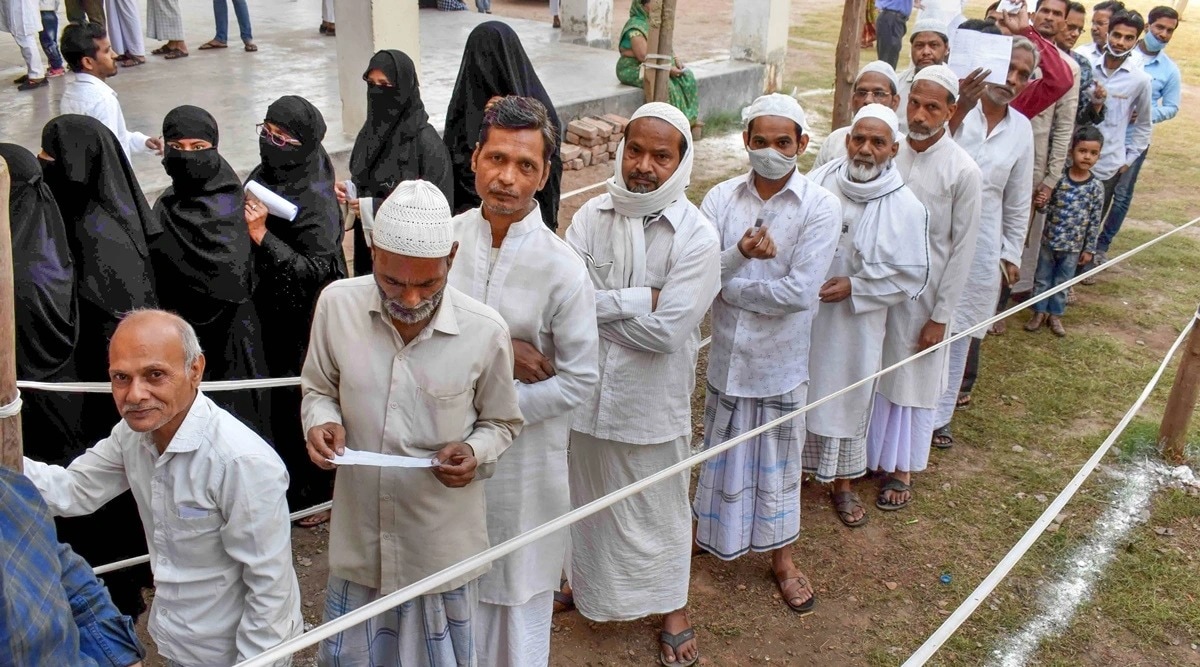Remote voting for migrant workers in 2023: What is the plan EC has outlined?

What is the EC’s proposed strategy for remote voting among migrant workers? In 2011, the country had 45.36 crore migrants. Many people are unable to vote because they are unable to return to their home districts on election day. In the following ways, the Election Commission will assist them.
The Election Commission (EC) announced on Thursday that it is ready to pilot remote voting to save domestic migrants the trouble of returning to their home states. This follows the European Commission’s recognition of disenfranchisement due to migration. In a statement to the media, the EC stated that by taking this action, it hoped to strengthen India’s democratic process by increasing voter turnout.
According to the commission, a prototype for a Multi-Constituency Remote Electronic Voting Machine (RVM) that can handle multiple constituencies from a single remote polling booth has been created.
The European Commission has invited all eight recognised national parties and 57 recognised state parties to an RVM demonstration on January 16 and has requested written opinions by January 31.
The Indian Express explains the reasoning behind this decision, the EC’s proposed remedy, how RVMs might work, and some issues that need to be addressed.
The problem: migration-based disenfranchisement
While there are numerous reasons why registered voters do not vote, domestic migration is a significant one in the Indian context.
According to the 2011 census (the numbers will have increased since then), there are nearly 45.36 crore migrants in India (both intra and interstate), accounting for roughly 37% of the total population. Migration can be influenced by marriage, natural disasters, employment, and other factors.
Voters who are not present at their home locations on election day, despite their desire to vote, are unable to do so for a variety of reasons, according to the EC’s concept note for RVMs. This indicates that a sizable portion of the population is denied the right to vote due to job demands or a lack of transportation resources. This directly contradicts the EC’s mission of “Leaving no voter behind.”
Remote EVMs are suggested as a solution.
To better understand this issue, the EC formed a “Committee of Officers on Domestic Migrants,” which submitted a report in late 2016 after considering a number of potential solutions, including internet voting, proxy voting, early voting, and postal ballots for migrant workers. All of these concepts, however, were rejected for a variety of reasons, including issues with accessibility for illiterate voters, a lack of vote secrecy, a disregard for the one person, one vote principle, and so on.

As a result, a technological solution that relies on the development of a reliable electoral roll and identification mechanisms (to prevent double voting) and allows voters to cast ballots remotely in a secure setting was proposed.
The RVM was developed in part by Bharat Electronics Limited (BEL) and Electronics Corporation of India Limited (ECIL). It is based on the currently in use EVM system.
Technology allows voters from different constituencies to use the same voting machine.
An emergency communications plan (EC plan) is a document that outlines procedures, contacts, and guidelines for information sharing throughout all stages of an unexpected event that requires immediate action.
A solid EC plan provides detailed instructions on how to handle a crisis. The plan identifies key players and their backups, outlines information sharing protocols, and outlines the steps to track and share employee and corporate status. The strategy should specify how to leave or remain in the building.
The plan should also specify where employees should congregate outside the building in the event of an evacuation, as well as how status updates will be distributed to both employees and interested parties. In an emergency, an EC plan must be able to launch quickly, brief senior management as soon as possible, inform all interested parties, and anticipate the need to switch communication channels as the situation changes.
The plan should include information dissemination strategies for both electronic and non-electronic communication channels. This includes announcements broadcast over the building’s paging system, pre-recorded robocalls, and automated text or email alerts.
If electronic communication channels are available, social media and the company website can also be used to distribute emergency information. Although automated emergency notification systems can improve the EC plan, a traditional landline call tree should also be included in the strategy in the event that cellular or Internet service is unavailable.
A solid emergency preparedness strategy should have management’s support and cover a wide range of contingencies, from severe weather to bomb threats to an active shooter in the workplace. Organizations should test, review, and update the plan on a regular basis to ensure that everyone can carry out their roles and responsibilities effectively.

Although the concept note provides a good overview of what RVMs will look like, the EC demonstration on January 16 will go into greater detail about the technology.
Because the RVMs are “stand alone, non-networked systems,” voters will have the same experience as they would with current EVMs. They will be built in outlying areas of the state, similar to current polling places.
In contrast to EVMs, which typically use printed paper ballot sheets, a single Remote Ballot Unit (RBU) can serve up to 72 constituencies by using a “dynamic ballot display board.” The required candidates will be displayed on the Ballot Unit Overlay Display based on the constituency number read from the voter’s constituency card (BUOD). A barcode scanning system will be used to read these cards.
After confirming a voter’s identity, their constituency card will be read, and the candidates’ information will be displayed on a public display. This will also be shown in private on the RVM’s RBU’s BUOD. The voter will then cast their ballot, and each vote will be recorded in the control unit of the voting machine based on the constituency.
The new technology is expected to work in the same way as the VVPAT system.
Several important questions remain unanswered.
The EC has admitted that the system has some flaws.

To begin with, migrants are a diverse group with diverse identities, environments, and circumstances. Given the transient nature of migration in India, the EC’s challenge is to develop an inclusive definition of migrants while also preventing systemic abuse. Is it true that all immigrants have the right to vote? How long must a migrant be away from home in order to be eligible? The resolution of this issue “will necessitate broader consultations with various legal and political stakeholders,” according to the EC’s statement.
Second, given the growing interest in technology-based voting, how do RVMs fit into the discussion? Is it possible that the refusal of EVMs in some countries in favour of paper ballots will cast further doubt on the integrity of the voting process itself? According to the EC, RVMs are just as secure as current EVMs, but adding more technological elements will inevitably raise more concerns.
Third, how does remote voting affect elections and campaigning? In theory, remote voting could give larger parties and more wealthy candidates who can fund extensive campaigning an advantage in a far from level playing field.
Edited by Prakriti Arora




